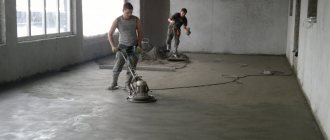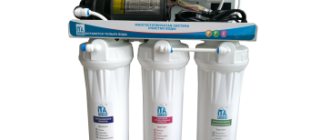It’s great when you have the opportunity to swim right on your backyard, but what about when the cold weather sets in? We suggest you figure out how to preserve a pool for the winter: instructions, videos, useful tips - all this and much more will be discussed in detail in the review.
Let us immediately note that it is quite acceptable (and some experts even recommend) not to perform any such work at all if the tank is always in a usable condition. But it is clear that certain costs are associated with this, for example, for stable maintenance of water temperature at a level of at least +5 0C. You will also have to spend money on a coating that reduces heat loss from the surface of the liquid. We are no longer talking about the fact that heating equipment needs to be monitored or at least periodically checked, but this is not always convenient and generally realistic, especially for those families who move to city apartments during the cold season.
Why close the pool for the winter?
As you know from a school physics course, water in the cold not only freezes, but also expands, which means it presses on the bottom and walls of the tank. If the latter are made of a sufficiently pliable material, for example, from some environmentally friendly polymer, cracks will most likely form in them as a result of such exposure. They will require expensive repairs to eliminate damage or even a complete replacement of the bowl, otherwise swimming will simply become impossible, because the liquid level will constantly drop.
Also keep in mind that low temperatures and precipitation are quite capable of damaging the equipment of the pumping group, skimmers, filters, heating systems, and all this is definitely relatively expensive equipment that is best removed and stored in a covered and heated garage (or utility room) until the onset of the swimming season.
At the same time, the answer to the question of whether to drain the water from the pool for the winter is far from being as clear as it might seem at first glance, because there are two options.
How to store?
Experienced owners advise treating the surface of the walls with talc before storing.
It absorbs moisture and will not allow the material of the bowl to stick together when folded. Well, in order for the safety of the pool to be at its best, you should not neglect the rules for assembling the structure. You can store the folded device in a barn, garage, attic, or any other room where the temperature is above zero.
Small swimming pools can also fit in an apartment; there is a place for them on the balcony or in the closet. There are several ways to store frame pools.
- Simply cover the site where it is deployed with protective material.
- Dismantle the structure and store it in the same place where it is installed.
- Disassemble the pool and put it in a warm room.
In the first case, this can be done when we are talking about all-season models that can withstand frost. You will read about this in the instructions, but this approach is fraught with consequences: the ice that forms when water gets inside freezes can damage the base and walls of the pool. It’s better not to risk it and still dismantle the pool.
When disassembled, there is less opportunity for moisture to get inside and freeze. The assembled structure is covered with a thick film, fixing it with bricks or heavy objects. This storage method has a right to exist, but it is also an unsafe and suboptimal option.
Precipitation can seep under the protective cover and negatively affect the strength of the material. Take every opportunity to find a dry, warm place and store the pool elements there. This is an exact guarantee of reliable protection of the device in winter.
In the next video you will learn how to properly roll up a pool bowl in 5 minutes.
Types of conservation
There are 2 of them:
- Dry - with complete removal of liquid from the bowl, usually relevant for those tanks that are used indoors; in private ownership it is used less frequently.
- “Wet” – some of the H2O still remains to prevent cracks and damage to the bowl; this type is designed for external rather than internal objects and allows you to save on electricity, heating, and maintenance of the facility, which is why it is used more often.
These schemes have one goal - to prevent cracks, destruction and costly repairs. We will describe both, because each of them is good and useful in its own way, and you ultimately decide whether you need to drain the water, whether you can leave the pool with it for the winter. But since the second option is more popular, we will start with it.
How to clean a swimming pool before storage
Preliminary preparation of the tank for storage includes emptying it of water and cleaning it of dirt and debris. The tank can be emptied through special drain holes or using a submersible drain pump. Children's models simply turn over and drain the water onto the lawn. For large structures, you should use a hose that is inserted into the drain hole and the water is redirected to the pit, storm drain.
Using special pool cleaning products allows you to keep it intact for many years
Advice! If the pool does not have a drain valve, then you need to immerse one end of the hose inside the bowl and pull the air out of the other. After this, direct the water to the place designated for this purpose.
It is recommended to wash the tank with a sponge, a soft cloth, or a brush on a telescopic handle will do. Liquid soap should be added to the water to clean the pool; the use of abrasive cleaning agents should be avoided. They contain hard particles that can severely scratch the plastic.
We recommend reading: How to wash a blanket made of wool: camel and sheep
Considering that the surfactant is not washed off from the surface for a long time, you should rinse the bowl inside and out several times. If you ignore this point, the next time the pool is used, the water will begin to foam. And soapy liquid does not have the best effect on the human mucous membrane.
When using a collapsible structure, all its components must be cleaned of dirt separately. For them, liquid soap is also diluted with water in a container and washed thoroughly with a sponge.
Sequence of actions for “wet” conservation
Ideally, you should familiarize yourself with it before building a bathing structure - in order to select associated equipment and provide for the transition from the summer heat to the cold season.
Therefore, we tried to describe the algorithm in as much detail as possible, paying attention even to seemingly obvious points - so that you have a clear picture of what steps to take - there are only 10 of them, and each one will not take up too much time.
Adhere to the following scheme, implement all the specified measures without errors or deviations, and you will be able to resolve the issue quickly enough, without problems and without involving third-party specialists.
Draining
To do this, it is necessary to carry out drainage even at the stage of construction of the hydraulic facility. If it is not provided, and the bowl has already been actively used and you need to deal with frost somehow, just buy an additional pump, only powerful enough to quickly pump out the liquid.
Cleaning metal parts
Give the following elements a good brush with a stiff brush:
- handrails;
- ladder;
- gratings;
- backlight
MBFT-75 Membrane for 75GPD
SF-mix Clack up to 0.8 m3/h
SF-mix Runxin up to 0.8 m3/h
After this, apply disinfectant solutions to all treated surfaces to protect them from fungi and bacteria during the entire downtime. The same must be done with technological equipment, regardless of what material the acrylic, polypropylene or concrete bowl of the tank in which it is installed and operated is made of.
This is a mandatory and very important stage in preparing the pool for winter at the dacha, and it should be carried out strictly using personal protective equipment - wearing gloves, boots, overalls and a respirator. Why? Because you will have to use rather aggressive household chemicals that should not get on your skin, mouth or eyes. Be sure to take care of your own safety.
Cleaning the walls and bottom
A similar operation must be performed with the surfaces of the hydraulic structure itself. You can use the same tools at this step, that is, a stiff brush. If your budget allows, we recommend buying a special vacuum cleaner to go with it - it will immediately remove a significant part of the raised dirt from the surfaces, significantly speeding up the work.
Dismantling lighting
When deciding how to leave the pool with water for the winter, remember that during this period no installed objects should remain in the bowl, including those responsible for its beauty. Therefore, be sure to remove these elements in the following order:
- carefully remove the protective glass;
- remove all spotlights from their niches;
- insulate the wiring well;
- Wrap each removed device in cloth and store in a dry and constantly heated room.
With the onset of the warm season, carry out the installation by repeating all of the above steps in reverse order.
Working with a pumping group
This equipment should also be taken care of by choosing a suitable operating mode for the cold period, or, more precisely, waiting, otherwise under the influence of low temperatures it may fail (rubber gaskets, hoses will leak, or some other similar problem will arise), and then it will need repairs or replacement of components, but why do you need to spend extra expenses. To prevent damage:
- turn on the “backwash” option and pass cleaning solutions through the pump filters;
- then switch to compaction mode and make sure there are no leaks;
- then return to normal operation.
Disinfection
A mandatory stage of winter conservation of the pool, because for the entire period of inactivity - and this is several weeks or even months, depending on the climate - it is necessary to prevent the growth of algae and bacteria in the water. If this is not done, in the spring you risk finding the bottom and walls overgrown with greenery. And then all these surfaces will have to be cleaned with brushes for a long time and tediously, and then also checked for the absence of pathogenic microflora, which takes time, effort and money.
Therefore, it is easier and more reliable to add special agents to the liquid and let it circulate in the filtration system for 2-3 hours. During this time, it will run several times, become saturated with useful particles to the required concentration, and all pipes will be thoroughly washed.
Salt protection
When deciding how to close the reservoir for the winter and what to do with the pool in general, remember that during the frost season the preserved water will not move. This means that additives must be added or poured into it to prevent the formation of compounds that can precipitate and generally contaminate the hydraulic structure. Spend money on these products, and you will not regret it, because they will dissolve without a trace, will not produce impurities and will not in any way affect the comfort of bathing in the future, but will not allow plaque and other organic matter to appear on the walls and bottom.
Compensator installation
It is needed to reduce the pressure of expanding H2O on the bowl and thus prevent the appearance of cracks. It will also protect the tiles and cladding, which are usually even more fragile than the frame structure of the tank, from damage.
SF-mix manual up to 0.8 m3/h
AMETHYST - 02 M up to 2 cubic meters/day.
Aeration unit AS-1054 VO-90
In practice, when deciding how to prepare a pool for winter in a country house or garden, you will definitely not have any problems choosing such protection. Because its role can be effectively performed by a variety of objects and materials, including such common ones as:
- foam sheets;
- empty plastic bottles and tanks of various capacities;
- plastic containers and canisters of suitable volume;
- used tires and tires.
In general, anything that is clean enough from an environmental point of view will not react chemically with H2O and will float. Yes, you understood correctly, such homemade compensators must be evenly distributed over the surface of the liquid, equipped with weights so that they are not blown away from their places. Naturally, the waterline will rise somewhat, which means you will have to drain several liters.
Removing the hydraulic system
When choosing how to preserve a pool in winter without draining the water, know that the technological equipment will have to be dismantled during any “wet” preservation. This is not a problem to do - just follow this algorithm:
- remove filters, counterflow, heaters one by one;
- drain or pump out the H2O remaining in the system;
- place plugs on the free ends of the pipes;
- Place moisture-resistant (impermeable) plastic bags over the valves and secure them with twine.
Tank cover
This is the final and perhaps the most important stage: by carrying it out correctly, you will prevent the influence of ultraviolet radiation on the liquid (which means the proliferation of bacteria and the growth of algae), as well as contamination of the bowl due to the ingress of foreign objects into it.
To achieve the result, you simply need to tighten the hydraulic structure from above with a suitable material, that is, sufficiently durable, strong, and resistant to UV radiation.
And now that we have already decided why to do this, let’s see what and how to cover it - we leave the pool for the winter under:
- dense polymer film;
- canvas awning;
- polycarbonate sheets;
- wooden shield.
A specific option must be purchased based on the budget, the lowest temperature that will be observed during the cold season, as well as the expected level and intensity of impacts. Thus, correctly chosen protection resists frost and humidity (normal for the region and time of year), withstands the weight of snow, and does not deform due to frequent rains or other precipitation. It also greatly simplifies maintenance of the hydraulic reservoir during downtime, reducing it to a minimum.
Just follow this step-by-step diagram and you will complete the job flawlessly.
Nothing is simpler
So, now you have clear instructions for action:
- drain the water
- rinse the pool,
- pour water with chemicals, filter,
- wash and dry equipment,
- put plugs,
- place half-empty plastic bottles,
- cover with an awning.
After this, you can safely leave your pool to spend the winter at the dacha. And no frost will be scary for him. And with the arrival of the swimming season, it will again delight its guests with warm clear water for many years to come.
IMPORTANT! The ice in the pond should melt naturally. There is no need to split it, as sharp chips can damage the thicket of the structure.
Preservation of a composite (plastic or concrete) pool for the winter
This is a structure whose bowl is made of several layers of material and therefore boasts strength. And the technology of its shelter, in principle, does not differ from that described above, it just has some nuances.
When carrying out this procedure, the following rules must be observed:
- take all measures strictly before the onset of the first frost;
- be sure to leave a certain volume of liquid;
- install the maximum possible number of compensators;
- pay increased attention to the quality of filtration.
A few details: it is extremely important to carry out chlorination - at least 2-3 hours, so that all H2O receives a sufficient “antiviral charge”.
And the second point: the waterline should go 10-15 cm below the nozzles, skimmer and other technological equipment - focus on such a conventional mark when you pump out.
The story of one happy pool
This true story directly relates to the topic of the article. It happened and continues to happen successfully with our good friends.
Proper preservation and care of the pool bowl even in Siberia!
...The long-awaited and only daughter was born into an elderly family. The happy parents immediately equipped the yard with all kinds of children's swings, houses, and sandboxes. We didn’t lose sight of the pool by purchasing a frame Intex. By the time the pool was installed, the girl was 8 months old. As soon as it got warmer, little Irinka started swimming in clean homemade water! Wonderful, isn't it?
...Now the girl is 9 years old and the pool is still in service and is not going to give up. During this time, its owners only glued the bottom twice. The key to success is the proper operation and maintenance of the pool. Storing the pool bowl in winter and proper care in autumn is one of the main activities.
We deal with EVERY nuance of storing a frame pool in winter.
Dry preservation
In this case, you will definitely not encounter the fact that your pool water is frozen, because there simply won’t be any left in the bowl. The technology is similar to “wet”, and in some ways even simpler, because some activities do not need to be carried out at all. But what needs to be done is:
Main table dispenser AquaPro 919H/RO (hot and cold water)
Main table dispenser AquaPro 929CH/RO (cooling/heating)
Floor dispenser AquaPro 311 (empty, without cooling)
- Stop the filtering equipment.
- Clean the mirror coating and metal parts.
- Seal the fluid supply system.
- Completely pump out H2O, with its obligatory dechlorination.
- Treat the bottom and walls of the bowl with a disinfectant.
- Dry the pipes and equipment used.
- Remove the lighting and de-energize the electrodes.
- Line the surfaces of the tank with a material that protects the insulation and finishing from mechanical damage.
- Fence the structure so that children, guests or pets cannot accidentally fall into it.
Everything is simple and extremely clear, how much water to leave in the pool for the winter - there should be none at all.
What are the disadvantages of a frost-resistant pool?
Despite a number of advantages, all-season frame pools have some disadvantages:
- Installation of the pool
In order for the pool to serve for a long time and reliably perform its functions, you should entrust its installation to specialists. There is no need to look for trusted professionals; when ordering pools on our website, we will provide qualified installers with the necessary knowledge and experience. - Landscaping
Before installing a pool, it is necessary to remove the top layer of soil and level the surface. If there is a desire and opportunity, the pool can be “sinked” relative to the ground level by arranging the area around it using tiles or stones. It takes some extra effort, but it looks great. Fortunately, landscaping the area around the pool is not necessary. - The cost of frost-resistant pools
The cost of “all-season” pools is higher than mobile summer pools, but it is not comparable to the costs of installing a regular stationary pool. Considering the time and financial resources that will be spent on design, materials and construction, using a steel frame is much more profitable. If you like winter swimming in a warm pool, choose an all-season mobile option. If necessary, it can always be dismantled and moved to a new location.
Go to the catalog of frost-resistant frame pools
How to remove a collapsible or inflatable model
They are even more in need of protection during the cold season, since they are considered less durable than frame ones, and tolerate frosts less well - they quickly tear and crack under the influence of low temperatures. To protect them from defects and ensure many years of use, they must be stored in a garage or other dry and well-heated storage area during the entire period of inactivity.
Dismantling is carried out as follows:
- clean the bottom and walls, attention, with gentle agents;
- pump out all the liquid (again, the answer is negative to the question of how much water to leave in the pool for the winter - it is not needed);
- dry the entire structure and disassemble the installed equipment;
- move it all to a place where it can wait for warmth without any problems.
How to fold
If the bowl is made of PVC or a similar material, it is very important that it is stored without creases, otherwise later it may simply not restore its original geometry, for example, some of the walls will sag. To avoid such problems, it must be collapsed in 3 stages:
- inside;
- in half;
- triangle.
The result should be a compact but not too tight roll. Yes, the guide wire or other similar elements must be removed before folding.
The air needs to be released from the inflatable model. After this, it is recommended to lightly sprinkle it with talcum powder - the powder will absorb the remaining moisture, so that the walls will not stick together.
How to store
It is important to understand not only how to winterize your pool, but also how to maintain it during downtime. Otherwise, he may receive some damage while he waits for summer. To avoid problems, it is important:
- put the package in a separate bag-cover;
- leave it in a room with a suitable microclimate, that is, dry and constantly heated;
- do not put anything on top;
- exclude proximity and, especially, contact with any sharp or protruding objects, as well as with operating heating or cooling devices;
- Check the condition regularly, at least once a month.
Requirements for swimming pools in winter
An important question that concerns many structure owners is how to store a frame pool in winter. It all depends on the type of product. Modern manufacturers offer potential buyers two types of designs:
- Seasonal;
- Frost-resistant.
The first option involves the use of an artificial reservoir in the summer. Before the onset of the first cold weather, this structure must be dismantled and individual parts of the tank must be stored in a special way. The second model eliminates the dismantling of the structure even in cold weather and allows the product to remain assembled throughout all seasons.
Let's consider each option separately and determine how to store a frame pool in winter, if it is seasonal or frost-resistant.
Rules for dismantling and storing seasonal frame-type models
It is important to begin dismantling seasonal structures by draining the water.
Draining the water can be done in parallel with mechanical cleaning of the inner surface of the walls.
Cleaning is a must because all parts of the seasonal model must be kept clean. The most important point is to rid the metal coatings of the tank from limescale.
To clean limescale deposits, it is best to use a non-metallic brush to avoid damaging the inside of the bowl.
It is not difficult to disassemble the frame tank, however, to avoid the loss of various small elements, it is worth placing all parts of the product in separate containers. It is important to dry the pool very well and fold it neatly. It is necessary to take into account the storage conditions of structural parts. If there is no heating in the room, then the material should be folded as tightly as possible so that the low temperature does not damage the fragile plastic.
You may be interested in: Assembling a frame pool
Preservation rules for frost-resistant models
A frost-resistant frame pool can remain assembled during frosts. If you are the owner of such a model, then you must use the special instructions that come with the kit.
Pressure compensators are already installed
To preserve your pool and protect it from equipment damage, you must follow the following recommendations and tips:
- All work to preserve the tank must be completed before the temperature drops to zero degrees for the first time;
- Do not leave the structure without water;
- The next fill of water is carried out using a special technique and after high-quality cleaning of the walls of the tank, as well as removal of the necessary equipment;
- Compositions used to clean the pool should be used in compliance with all safety measures, since they are aggressive to the human body;
- It is important to carefully and correctly dismantle important components inside the bowl to prevent damage to the hydraulic system.
Important! It is strictly forbidden to add preservatives to the water that was used for bathing.
After following all the recommendations, you must wait until the end of filtration, which will take at least three hours. Next, you will need to drain the water to a mark that is 10 cm below the side nozzles.
At the final stage of conservation, it is important to place expansion joints. To do this, you can use various items, for example, car tires, polystyrene foam, old plastic cans. These items are immersed in water using sandbags or other weights.
The last thing that needs to be done is to install an awning over the pool, which will provide additional protection for the pool in winter.
Useful tips
A few more practice-proven life hacks regarding how to properly preserve (cover) an outdoor pool for the winter:
- Keep in mind that the work will take time - about a day to clean the surface and another one to dry and dismantle the equipment. Doing this together is much more convenient, although not faster.
- Start solving the problem only at a suitable temperature - when it is clear, there is no precipitation and no colder than 15 0C.
- Carry out all stages in special clothing - goggles, respirator, rubberized suit, gloves, boots; For some reason, many people neglect this basic rule and end up with chemical poisoning.
- When cleaning, use brushes and rags specially designed for this purpose - you will get the job done much faster.
And here we want to make a small digression from how the conservation of an outdoor outdoor pool for the winter should take place: the instructions with photos may be the most detailed, but they still won’t tell you where to buy all the equipment and tools. We are correcting this shortcoming: you will find everything you need from us and order at competitive prices, please contact us. Now let's get back to life hacks.
- Carry out chlorination without fail, running the liquid several times for 2-3 hours - give it time to receive a sufficient amount of useful additives.
- Remove equipment only after complete blackout.
- Change the position of the valve on the filter when the pump is turned off, otherwise jamming is likely.
- Blow out or remove the pipes, do not leave them.
- Clean the soil under the structure from plants, dirt, and foreign objects.
- Do not ride on the icy surface during the cold season and do not try to break it, remove snow regularly.
And finally, to consolidate our analysis of how to properly preserve a pool with water for the winter, video. Several useful videos will help you present the scope of work even more clearly.
Is it possible to store a swimming pool at minus temperatures?
You can leave the assembled pool outdoors for the winter only if it is made of metal. Off-season models tolerate frost well and do not suffer from temperature changes.
As for the proper storage of plastic-type pools, they are dismantled when cold weather sets in in the fall. If such a tank is left assembled on the site, it may suffer. The danger to the structure is:
- temperature changes, under the influence of frost the walls become deformed and crack;
- rodents - in winter and spring, a tank left unattended for storage can be chewed by garden pests;
- vandals; in the absence of the owners, hooligans can get into the site and damage the property;
- natural precipitation, melt or rain water does not always have a good chemical composition and can damage the walls of an abandoned tank.
Attention! Leaving a frame pool outdoors for storage throughout the winter is only possible in southern regions where the temperature does not drop below zero.
The frame pool is cleaned before the cold weather when the temperature is set at about 10 ° C











